1. The epic world and all the details that make it so real.
Jia Jia: Though this is the first issue of Monstress, you already get a sense of how rich the world is. There is a caste system of humans vs slaves, a massive war is going on and something awful went down at Constantine. There are different races and religions—the arcanics who seem to have access to some primal magic power and the cumaea who study magic with the clinical and eugenic gaze of science (incidentally, the witches who seem to be the lead experimenters remind me of Mrs Coulter, the Magisterium and “experimental theologians” of Philip Pullman’s trilogy His Dark Materials). There are political factions and there is deep deep history, including a mention of a freaking awesomely powerful empress shaman from the ancient past!
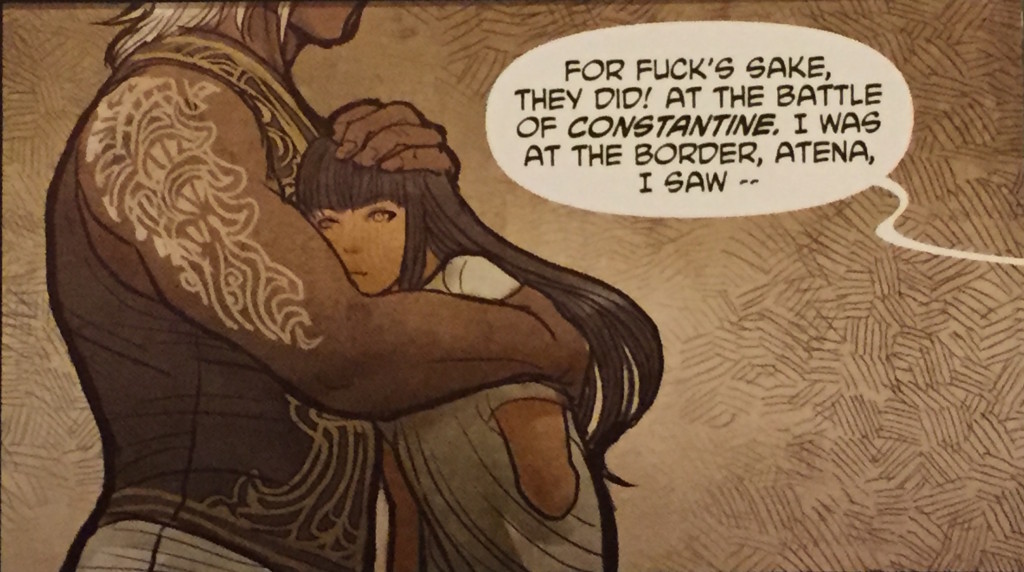
Juliet: I loved the little intimacies that were not explained, the untold stories that build the texture of a world. When Maika is first…acquisitioned by the witches, one shoves her away and she falls unbalanced into the arms of the male muscled slave, who embraces her for a moment as father to child. It is never explained and I wondered. He is completely voiceless in this (which seemed a deliberate reversal of the archetypical voiceless slave girl who exists only to look pretty), and I wonder at his mute, momentary protection of another arcanic, when he must have an idea of the fate that he thinks awaits her.
And the liminal characters were fascinating too. Like slave dealer Mistress Ilsa who calls arcanics inhuman freaks and lies to the children about their fate—maybe to comfort them, maybe to make them more amenable—and then hands Maika her cigarette. These little unexplained, contradictory intimacies, the betrayals, the complications of people caught in these machinations, the ebbs and flows of history. It made it very visceral and very real.
2. The fact that the heroine is missing the bottom part of her left arm.
Jia Jia: I did a double-take when looking at that picture of Maika. “Wait, is that a perspective thing or is she actually missing her left forearm?” My gut reaction to missing limbs is to view them as imperfections, even though I know conceptually that it’s wrong to discriminate. So when I see people like Maika, Furiosa from Mad Max, or real-life model Viktoria Modesta kicking ass, not giving a shit about what I think, and looking great, I end up going, “Woah, these women are inspiring individuals and I’d like to be like them!” Also, I think it’s great that they all switch between using and not using a cyborg arm or leg. The cyborg look is very cool, but seeing these women get down to business without the prosthetic builds respect for who they are, not which body part we choose to fetishize.
3. The deep understanding of what war does to people.
Juliet: The construction of humanity/sub-humanity, and the delineation of us/them, was fascinating. The mentions to blood “testing pure,” and how Maika looks too human and they need to be careful that they don’t buy or sell “one of us.” It was interesting and true to life, and makes me very intrigued for how it all will play out.
I also loved the witches and their squeamish students. Maybe it’s because I’m in The Academy at the moment and all angsty about it, but I thought it was a darkly beautiful and disturbing metaphor for the way that we can intellectualize and turn people into objects, quantify their pain and distance ourselves from the messiness of life by retreating behind a faux curtain of research and pantomimed objectivity. Weigh the decapitated limbs and measure their grams, complain about your class schedule, without seeing the people behind it.
On that note, I loved that Marjorie Liu didn’t fall to either of the two extremes of 1) shying away from death or 2) pulling a George R.R. Martin and just killing everyone, to the point that you cease to care about characters or plot. She made it clear that this is a warscape, and no one emerges unscathed. You lose a limb, or your head, or (in the case of the witches) pieces of your humanity and basic decency.
This was one of the fascinating things about the comic so far: what war does to people, the way you can rebuild a landscape but people remain shattered and damaged under their rebuilt facades.
4. The awesome variety of women—kind, sadistic, refined, brutal, archeologists, scientists, politicians etc.
Jia Jia: It’s not so much that you notice how many of them there are when reading. It’s that afterwards I find myself going, “Wow, there was something really refreshing about that” and then I realize, on looking at the character design that they’re almost all women. And they range the gamut from siren-like witches to de-sexed guards; from adorable characters like the fox girl to bone-chilling witch scientists; and there are women who do things that make you wanna throw up. I think my imagination’s just never had to deal with that many women before—it’s like getting a whole new range of possibilities to play with and it’s so energizing.
Juliet: Yes yes and yes. And also the range of beauty. From the somehow vulnerable-yet-steely look of Maika to Sophia’s mom, who starts as a beautiful old lady and morphs into a terrifying, twisted gargoyle as her outside begins to mirror her inside.
Jia Jia: I really like Marjorie’s point in this interview, “part of being a full human being is imperfection—being allowed imperfections.” And that’s what she’s doing with these female characters. Also, she said she flipped the one-woman-among-five-men scenario that’s typical in quest fiction to make it five women for every man. To all those film and publishing execs who go “Oh no, having too many women is going to alienate our male audience/readership,” I say, “A lot more women are into this stuff than your narrow marketing studies concede and a good story isn’t dependent on a specific gender ratio. This is freaking sci-fi and fantasy. Play a little and give creatives and the paying public a bloody awesome story!!!”
5. The gorgeous design.

Jia Jia: I adore all the costumes—from the embroidery on Maika’s outfit when she’s riding on the steppes to the decadently luxurious robes of Sophia’s mother. The cultural touches are particularly interesting—Maika and Tuya’s clothing have high collars, tunics and riding pants that echo Northern Chinese and Mongolian nomad clothing. The patterns—on both clothing and interiors—fuse the delicacy of East Asian embroidery with the metallic edge of Art Deco, which Marjorie cited as an inspiration for Sana.
Juliet: Beautiful, I know! Tuya reminded me of the Mongolian girl with an eagle that caught the Internet’s imagination last year. And I loved how somehow the art seemed beautiful and sensual without being absurdly sexualized the way so much comic art is. Deep, sexy necklines, but they seemed to make sense in the context, and were just lovely, versus the unfortunate norm in comics of a completely inappropriate bikini-armor.
What we’re looking forward to in future installments:
Juliet: Kitty Kitty! The cat with the two tails has me intrigued. Along with WHAT HAPPENED AT CONSTANTINE I MUST KNOW!!
Jia Jia: I looooove the Monstra. Want to know more about these mythical beings, the empress shaman. And how Maika lost her arm.
Tags: comics fandom fantasy feminism




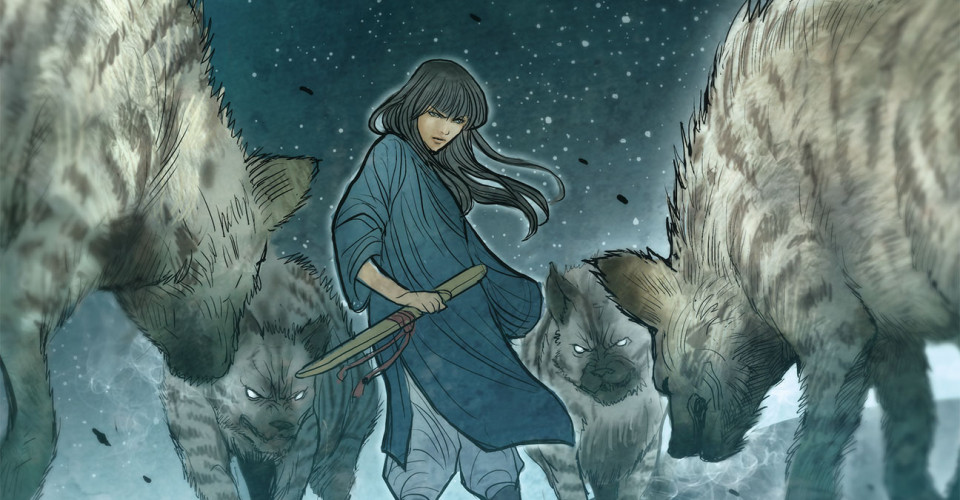
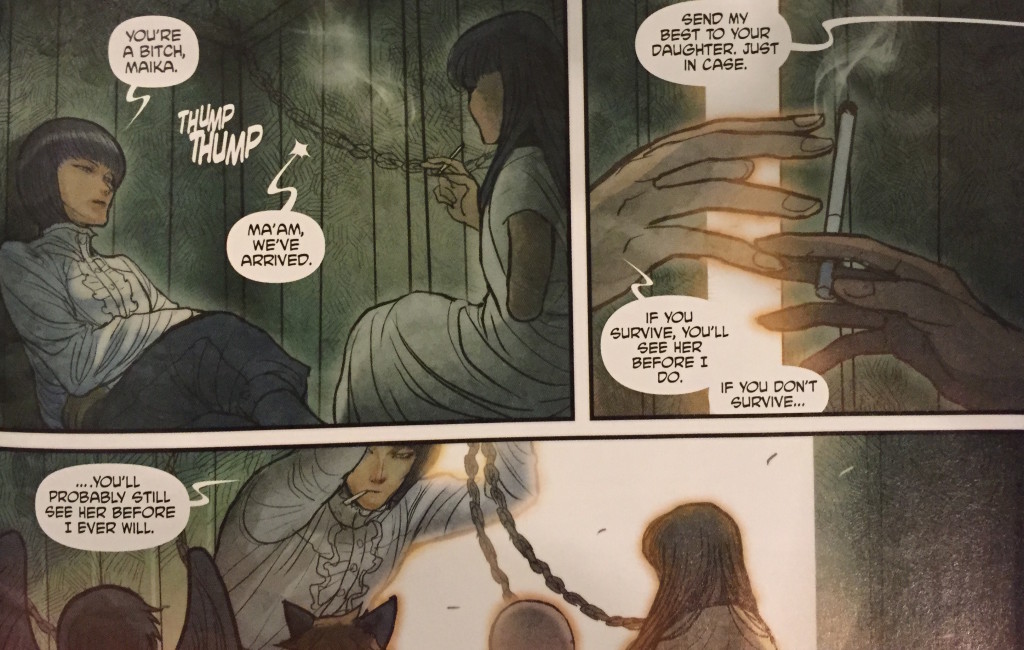
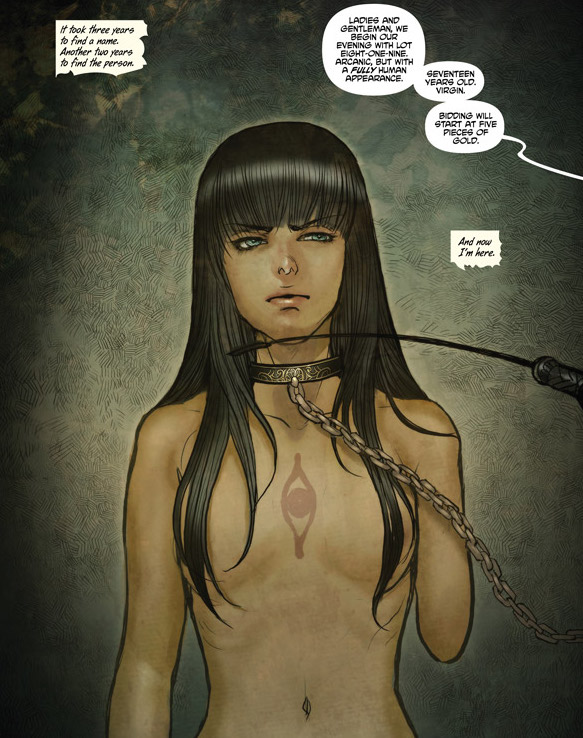
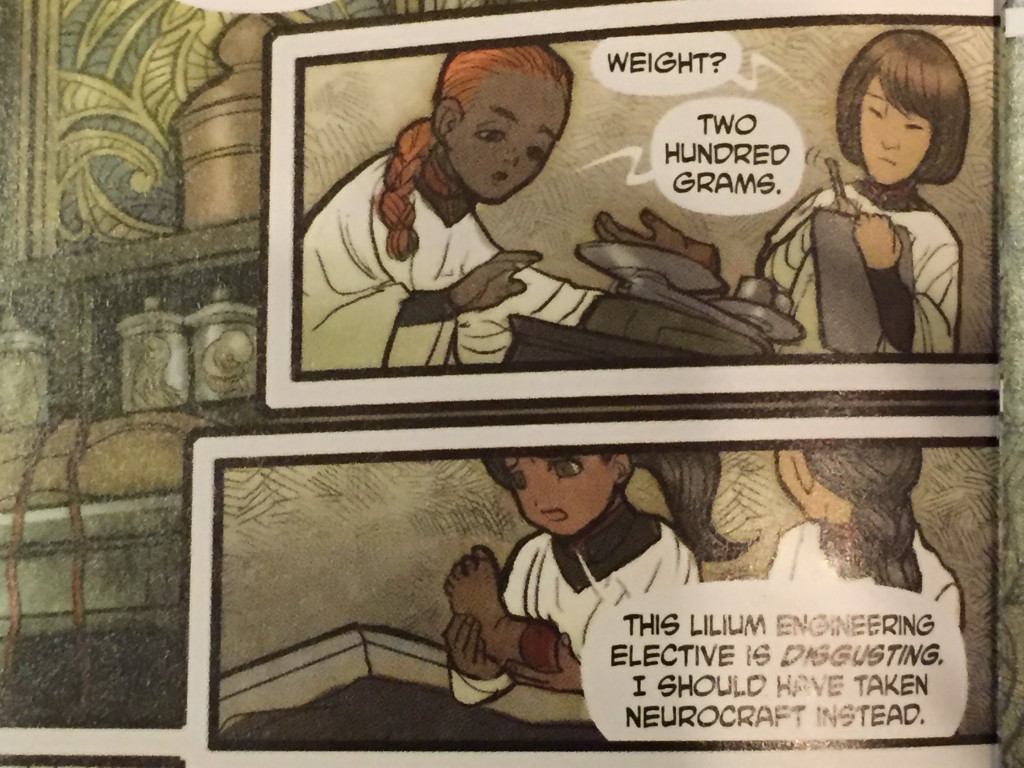

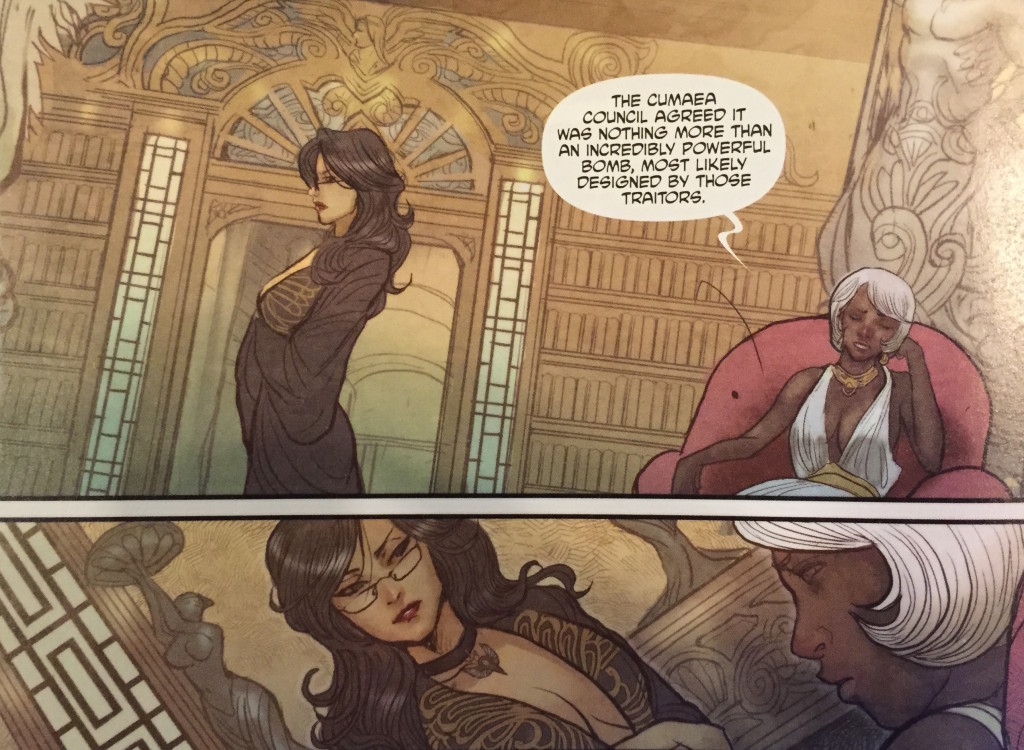
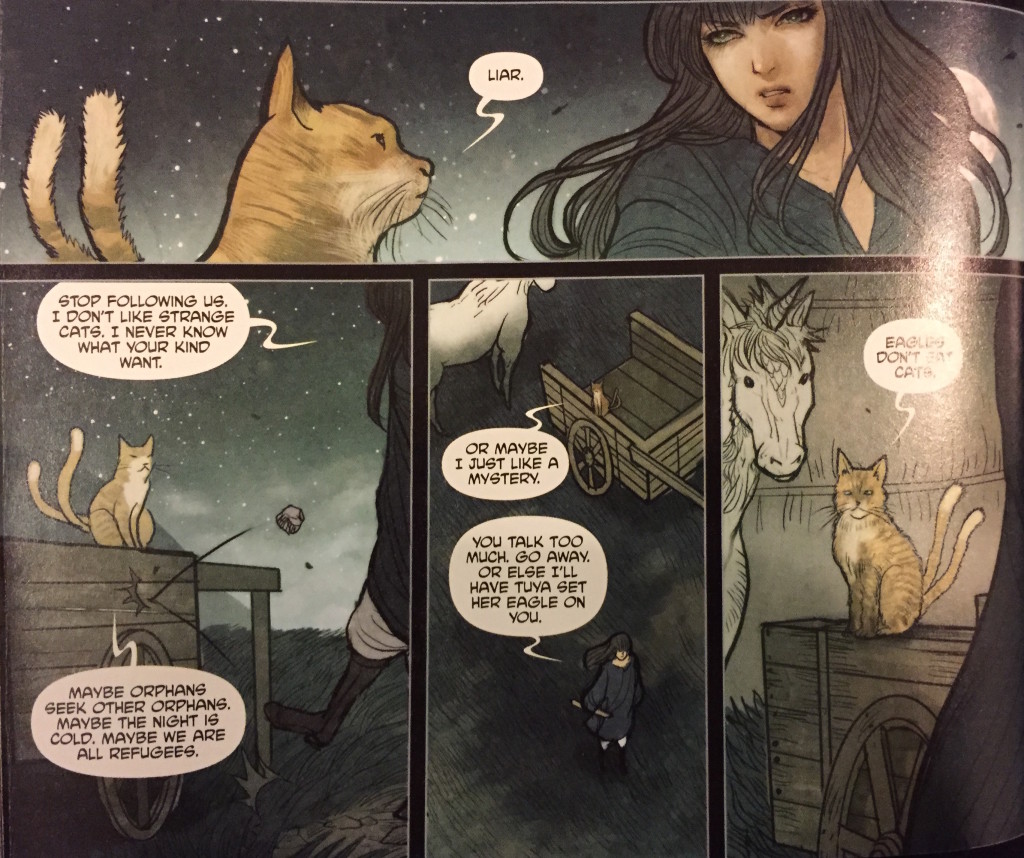
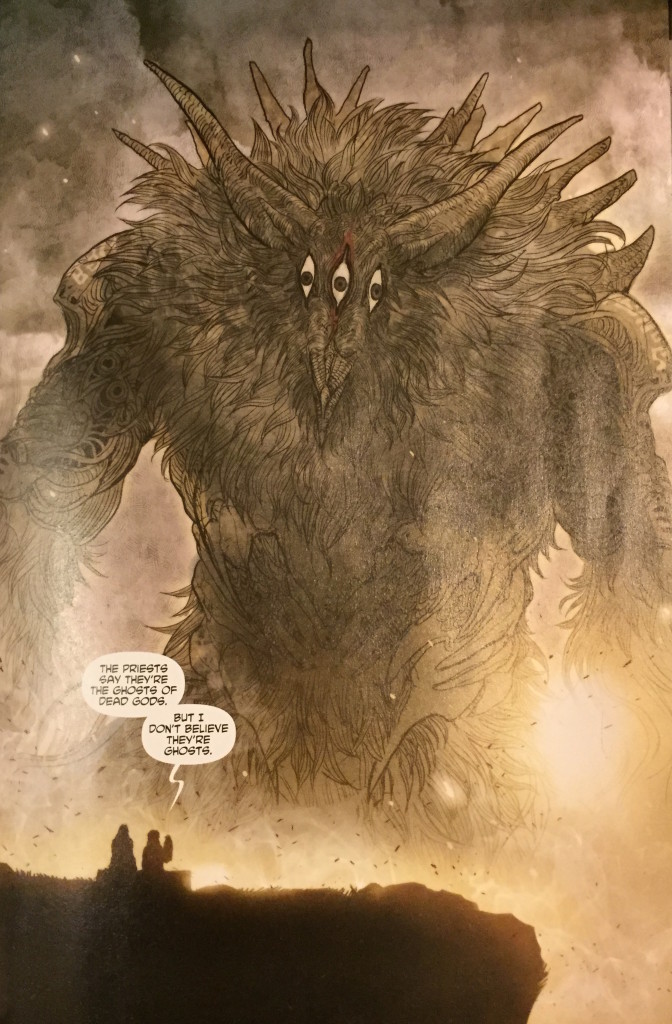








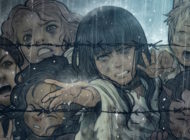
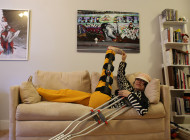









1 Comment
[…] into the complexity of war than the comic Monstress? If you want a teaser, definitely check-out our write-up, which the author Marjorie Liu herself thought was “awesome.” The second issue also […]